The Benefits of Hiring A Virtual Assistant For Your Business Growth written by John Jantsch read more at Duct Tape Marketing
Marketing Podcast with Rob Levin
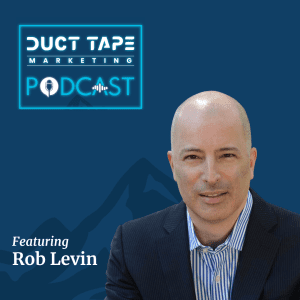 In this episode of the Duct Tape Marketing Podcast, I interview Rob Levin. He co-founded Work Better Now in 2018 and currently serves as the chairman. He is also the managing member of the Oasis Strategy Group and CEO of RSL Media. Previously, Rob was the founder and publisher of The New York Enterprise Report, a media company that served small and midsize businesses. Rob began his career as a “Big 6” CPA and held senior positions in several entrepreneurial companies.
In this episode of the Duct Tape Marketing Podcast, I interview Rob Levin. He co-founded Work Better Now in 2018 and currently serves as the chairman. He is also the managing member of the Oasis Strategy Group and CEO of RSL Media. Previously, Rob was the founder and publisher of The New York Enterprise Report, a media company that served small and midsize businesses. Rob began his career as a “Big 6” CPA and held senior positions in several entrepreneurial companies.
Key Takeaway:
Today, hiring people from anywhere in the world is more accessible and businesses can take advantage of the incredible remote talent that exists around the globe. Work Better Now is a virtual assistant company providing remote professionals from Latin America for US and Canadian-based small and mid-sized businesses. Rob emphasizes that having an assistant is important for all business owners because it allows them to focus on strategy and high-level work instead of admin work. Additionally, having a virtual assistant turns out to be an amazing return on investment for the company because it saves time and money since the business owner can delegate tasks they don’t enjoy or aren’t good at.
![]()
![]()
Questions I ask Rob Levin:
- [02:39] Talk about Work Better Now. What it is, what it does, and what is its unique place in the market.
- [04:56] In the area of marketing, many business owners can’t focus on the strategic work of marketing because they’re doing other stuff that probably shouldn’t be doing, and can be delegated to someone else, right?
- [09:46] Do you find that there is a difference in work ethic and culture that exists in Latin America that maybe doesn’t exist everywhere?
- [12:51] Sometimes when people talk about offshore or hiring people from other countries, there’s an idea of exploitation. Can you explain what you’ve seen as actually an opportunity as opposed to exploiting?
- [14:55] The people that have successfully engaged and really embraced this idea of an executive assistant freed up 20 hours a week of their time. Have there been some things that they’ve done, some best practices or mindset even required?
More About Rob Levin:
More About The Agency Certification Intensive Training:
Like this show? Click on over and give us a review on iTunes, please!
John Jantsch (00:00): This episode of the Duct Tape Marketing Podcast was brought to you by the MarTech Podcast, hosted by my friend Ben Shapiro, is brought to you by the HubSpot Podcast Network, the audio destination for business professionals with episodes you can listen to in under 30 minutes. The MarTech Podcast share stories from world-class marketers who use technology to generate growth and achieve business and career success. And you can listen to it all on your lunch break. Recent, an episode featured Max Novak, the founder of Nova Cast, where he talked all about how podcast booking campaigns create value For listeners and for brands. You know, I’m a huge fan of being guests on podcasts, so listen, check out the MarTech podcast wherever you get your podcast.
(00:57): Hello and welcome to another episode of the Duct Tape Marketing Podcast. This is John Janstsch. My guest today is Rob Levin. He co-founded Work Better Now in 2018 and currently serves as the chairman. He’s also the managing member of the Oasis Strategy Group and CEO of RSL Media. Previously, Rob was the founder and publisher of the New York Enterprise Report, a media company that serves small and mid-size businesses, having been nationally recognized for his small business leadership. Rob began his career as a “big six” CPA and held senior positions in several entrepreneurial companies. So Rob, welcome to the show.
Rob Levin (01:35): Thanks for having me, John.
John Jantsch (01:37): You know, you and I have known each other for at least a decade. Back when you were with a, as I mentioned, had the New York Enterprise report, but I did not know you were a cpa.
Rob Levin (01:45): Yeah, started my career my first four years and it was a great place to start a career. Big company was one of the big, at the time, big six account firms, and they did something, which is really interesting. They taught me how to work, right, how to communicate with clients, how to get stuff done, and how to work hard. It’s a great way to start a career, not to mention, you know, accounting’s one of the languages of business. So it’s a good background to have in my back pocket.
John Jantsch (02:10): Yeah, absolutely. I think that probably more businesses fail because of a lack of any knowledge there, or at least understanding there. Probably more so that, well, I don’t know, maybe marketing is up there pretty high too.
Rob Levin (02:21): Yeah, mark. Yeah, it’s gonna be Necky neck
John Jantsch (02:24):
Rob Levin (02:46): Yeah, I’ll just give you a quick story because I think that’s the best way to describe what we do. And actually kind of how we started it evolved a little bit. So it started as many things in my life do, and it, it did in a bar with, with a friend of mine from college. And I was saying, I wanna start this company. I want, I want virtual assistance for every business owner. I believe every business owner should have an as an assistant. And my partner, Andrew Cohen, who’s also worked with small businesses, said, holy cow, you’re totally, you know, you’re totally right about that. And he said, I’m in. And I said, what do you mean you’re in? Anyway, we became partners and the idea again was we, based on my experience having assistance based in Latin America, incredible, incredibly talented, eager to work people.
(03:29): And of course you have a big cost of living difference in Latin America as you do in the States. So it’s affordable for just about everybody. And we launched the business and it was going very slowly, just basically referrals and stuff. And then once Covid hit the, the business started to explode. And the other thing that, and because people became more comfortable with re remote workers, and the other thing that happened at the same time is we saw some of our clients hiring 2, 3, 4, 5, 6, 7, uh, and more of our people. And we started to take a look. And what happened is they would hire an assistant, realize that assistant had all of these other skills that they can use elsewhere in the company. Project management, customer service u I mean, 40 different roles now. So that we then pivoted from just being a virtual assistant company to providing remote professionals from Latin America for US and Canadian based, small and mid-sized businesses.
John Jantsch (04:21): Yeah, there’s a couple things you mentioned there that I want to talk about. The first, the idea that every executive or every business owner or every CEO should have an assistant. That’s something that, you know, a lot of, we talked about, you were in big corporate, you know, a lot, anybody that was at a C level had a several assistants, right? I mean, that was just a thing. And I think a lot of business owners don’t realize the drag of admin work that they’re doing. I mean, I heard somebody say, you have an assistant, it’s just you
Rob Levin (04:53): Jack Deli says, if you don’t have an assistant, you are an assistant.
John Jantsch (04:56): Yeah. Yeah. And I, and what I find is that, you know, we work with a lot of people, obviously with marketing in the area of marketing, and a lot of business owners can’t focus on the strategic work of marketing, you know, the day-to-day marketing because, you know, which is certainly an important aspect of market because they’re doing all this other stuff that probably shouldn’t be doing. And it’s almost like until they can get out of that, they can’t go to the important work. And so I think that certainly makes a case for this idea of everybody should have that level that they can delegate to. Don’t, shouldn’t, they,
Rob Levin (05:25): It’s, it’s a combination of a few things. First of all, you hit the nail on the head, you know this probably better than anybody, but you have to set aside time to think about the str strategy of your business, the product strategy, the service strategy. Even if you have a simple business, it’s, it’s something you really need to spend time on. And marketing is, in a way, there’s more opportunity than ever, but it’s also more challenging than ever cuz there’s so many different channels and what your message should be, and your customers buying habits, by the way, have changed a lot in the past 10 or 15 years as anybody who listens to podcast would know. You need to set aside time for that. And you can’t do that if you’re setting up your own meetings and rescheduling them cuz everything gets rescheduled,
John Jantsch (06:32): Right?
Rob Levin (06:32): Yeah. Not to mention you’re probably doing things you don’t enjoy doing or probably not good at doing.
John Jantsch (06:37): Yeah. Yeah. And just the disruptions too, I know in mind, I mean, I’m one of those people that if somebody sends me an email and asks me a question or needs something, you know, I’m gonna re, if I read it, it’s gonna be harsh for me to just say, no,
Rob Levin (07:11): Gonna respond as emotionally as we will Exactly. Because we’re people and we have these relationships,
John Jantsch (07:16): Right. I mean, or worse, you know, but I use that idea of a fee, you know, a lot of times people say, oh, can you just do it for this? And I’m, well, I want to help. Right. You know, but the assistant who has a rule that says, no, we don’t do work for this, doesn’t really have that
Rob Levin (08:06): Hu huge, huge. Whether you’re, you know, in one place in the, in, in the States, and then you’re hiring from another place in the states, which has been going on for some time. But now this, this notion also is now a lot more accessible to hire people from anywhere in the globe. Right. And you have incredible talent throughout the globe. Again, you have a big cost of living differential, but you know, a lot of people, a lot of my friends who are business owners, most of my friends are, have told me over the past few years how hard it is to hi, to hire people who are eager to work, who are very enthusiastic. It’s getting harder and harder to find that. Whereas around, around the globe, there are plenty of people that have the skills and the desire and the enthusiasm so that that whole world is now opened up to, to businesses. And by the way, big businesses have been doing this for years and years, right? Yeah. And now I think smaller businesses are learning that, hey, there’s a huge opportunity for me too. Yeah.
John Jantsch (09:00): I think that’s actually something I’ve seen a lot, a lot of smaller businesses are embracing, I think what have long been big business practices, you know, the whole C-suite idea. I mean, we have a, you know, this idea of fractional CMO or fractional cfo, f you know, it’s really made itself to the small business who maybe 10 years ago thought, oh, I don’t have C-Suite, you know, positions,
Rob Levin (09:54): Well, we decided to focus in on Latin America for a few reasons. First, starting with my experience. I’ve had an assistant from Latin America for the past 10 years. Actually, my assistant for eight years is now the general manager work better now. And not only did I have that experience, but I referred a lot of other people over to, to Latin American talent. This goes back to 2014 and all the way until we started and we were able to provide that service. What we found was very enthusiastic workforce, very talented, willing to learn, willing to find the hours. But then there were some other things too, like cultural similarities. Certainly as you compare us to other parts of the world, it compare Latin America to other parts of the world and also and donor. This can’t be underestimated similar time zones as us in the states, right?
(10:40): And that’s really important because either if you’re working with somebody, let’s say in Asia, then either they’re working while you’re sleeping in vice versa, which can work by the way for some situations. Or they are working your business hours, which means they are working in the middle of the night, which anybody who knows anything about circadian, the rhythms is not a good thing for some, for somebody’s health, not something that we wanted to promote. So for all of those reasons, as well as fantastic English skills mm-hmm.
John Jantsch (11:13): And now a word from our sponsor. Increase your brand’s visibility locally, nationally, or worldwide by utilizing The HOTH marketing products, ranging from SEO paid ads to content creation. Head over to thehoth.com and use the code WELCOME20 to get 20% off today. Plus you’ll get access to over 20 free marketing tools instantly. That’s thehoth.com and use WELCOME20.
(11:41): Are you sick and tired of wasting your precious time on tedious tasks, like pulling reports, rewriting blog posts, and trying to personalize countless prospecting emails? Well say no more because I’ve got some new AI tools that are gonna blow your mind. Introducing HubSpot’s newest AI tools, content assistant and chat spot. Content assistant uses the power of open AI’s G P T three model to help you create content outlines, outreach, emails, and even webpage copy in just seconds. And in case that wasn’t enough, they created Chat spot, a conversational growth assistant that connects to your HubSpot CRM for unbeatable support with chat-based commands, you can manage contacts, run reports, and even ask for status updates. The easy to use CRM just got even easier. Head on over to hubspot.com/artificial intelligence to get early access today to both content assistant and chats spott.
(12:51): So I want to just throw this out there. I know the answer to this, but I want to hear you address it because I’m sure you’ve been asked this question before. You know, lot, sometimes when people talk about offshore or you know, hiring people from other countries, there’s an element of exploitation even to it. I mean, it’s like, this is the only job they can get so we can pay them $5 an hour, right? I, I want you to talk a little bit about what you’ve seen is actually the opportunity
Rob Levin (13:17): Yeah. So first of all, our particular approach is we wanna make sure that our people are well paid, they’re paid considerably more than what they can make. But more importantly, when they, what you’ll hear from a lot of the people that, that work for our clients, which are going as well as our talent force, by the way, other than my partner and I, and a few salespeople, our entire companies run, um, out of Latin America. So what you’re gonna hear from them is, the opportunities that I get locally are, I don’t really like the culture. I’m not doing work that, that, that is, is interesting or exciting or I’m not learning and I’m certainly not making a as much money. So one of the reasons why I said to somebody literally today at lunch, that this is the coolest thing I’ve ever done, and I had a media company serving business owners that was pretty cool too, is because I’m just, I, I’m hearing from both sides about how amazing this is. I’m hearing from our clients, thank you, this has changed, my business has changed my life. Another thing I heard today at lunch from a friend and a client, and then I’m, we’re hearing from the talent that I’m doing meaningful work, I’m appreciated, I’m making more money, I’m able to buy that house that I couldn’t buy. So it, like I said, John, it’s the coolest thing I’ve ever done. Yeah.
John Jantsch (14:28): Yeah. So, so I know that I’ve talked to business owners that because this idea of every business owner needs executive, I mean, that’s been around for an executive assistant that’s been around for a long time. I think a lot that that advice has been given by many people. But I also know a lot of people that tried it and failed
Rob Levin (15:10): It’s you, you hit the nail on the head. It starts with mindset. It starts by saying, even if I can do these things well, I know that I’m not best served and I’m not serving my company very well if I continue to do these things because I’m not doing all of those other things that we spoke about earlier. It’s a mindset. It took me a long time to get there too, by the way. Yeah. Be between when I first considered an assistant and when I hired one was about 18 months or so. And of course you immediately, once you start doing it, you’re like, I wish I started 10 years ago. But so it starts with mindset, knowing I don’t have to and I’m not going to, and I don’t want to do everything because I know my time is spent, it should be spent in other places.
(15:48): And then as far as as tactically, it’s, you know, it’s as simple as once you know that there are other things you can be doing, the next thing to figure out is what can come off my list? And to build that list, to at least start to build that list before you hire somebody, right? Right. It’s calendar management. If anybody has calls or meetings, they know that it takes about 25 minutes to schedule a meeting, at least a back and forth. And then of course that meeting will probably get rescheduled. That’s another 25 minutes. That’s an, that’s almost an hour for every meeting that you’re having. That alone is crazy. Some people are into having their emails scanned and addressed, addressed by their assistant. Like, my accountant has turned his inbox from 600 to 50 a day. But some people like me, I don’t need that. I, my email is very much under control. I don’t need that. But then there are so many other things that can be done. Like all of those bills that are not on auto pay, have them pay it to, by the way, personal things like scheduling medical appointments for you or your family travel plans. I can go on and on. Auto, auto
John Jantsch (16:48): Credit card, auto credit card statements, that’s one that, you know, every month we’re like, holy
Rob Levin (16:52): Crap, credit card statements, expense reports. I mean, there’s probably a list of 150 things, right? But you just start creating your own. Then when you do hire the assistant, right, you at least have a starting point. And then here’s another trick. First of all, yet, you do have to let go. But what I did is I said, because I know how important processes are, but I don’t want to create ’em. I mean, I, that would just drive me bonkers, right? Like a lot of business owners. So I just said, look, every time you’re gonna do something and I’m gonna show you how to do it, document it. Number one, you can go back to it. Number two, if you’re out and I need to have somebody cover for you, I can just give them a manual. So it’s really just get, show them literally once or twice how to do certain things.
(17:35): Tell ’em what to, what is the outcomes that you’re expecting? And you hire somebody sharp, they’re gonna figure it out. And before you know it, what’s interesting that happens is when I started, and this happens to many people, I only had 10 hours a week of stuff for them to do 30, 30. And I was like, wow, does this really make sense? 30 days later they have more than they, you know, more things to do than they have time in the day and things are carrying over and they’re working, you know, 40 hours a week nonstop, getting things done, taking things off your plate because you’re feeling more comfortable giving to them. You’re realizing, wow, you know what, they can do this, they can do that. So it’s a combination of mindset all the way to tactics to really painting a picture to your assistant, this is what success looks like by us working together. I don’t have to deal with these things. They just get done.
John Jantsch (18:23): And I think to your point, and, and, uh, I’ve probably talked about it before in, in other, uh, environments, but you know, we have several work better now, folks on our team. And one of the things that, you know, we noticed right off the bat was certain, highly educated. So, you know, clearly could, could handle probably more than we were initially asking. And that’s what we’ve really, that’s been the mindset that we’ve taken is, okay, what else can they do? What else can they do? And so, you know, my assistant who came in, you know, essentially to do some of the administrative stuff is really sharp guy. He’s editing our podcast now. He is, you know, putting together our, you know, weekly newsletter. So this is my wife, this is the only call that rings on my phone. But putting together our newsletter, I mean, so, you know, just, I’m excited to see how far we could take it. And that’s really what we have found. And I think once you start then stacking some of these things up, you know, all of a sudden the return on investment is ridiculous,
Rob Levin (19:21):
John Jantsch (19:35): Yep. We’re actually, you know, where there’s a lot of business owners that I firmly believe we could help more with their marketing if they would get some of this, have a marketing assistant. And so we’re actually working on placing, you know, marketing assistance with clients who we can then do strategic work for, but we can also make sure that they’re getting a ton of output on a lot of the stuff that’s just not getting done, frankly, by anybody currently.
Rob Levin (20:00): Yeah, yeah. What we’re helping, what, and again, our clients told us this, that they found that, you know, wow, these people are so good. I’m taking projects and things that I need to do that have been on the shelf. They’ve been sitting there for a while and I can now make them happen. It’s like I said, it’s just we’re having a lot of fun. And then of course, from my perspective, you and I have known each other, I think it’s closer to 15, 16 years and I’ve been listening to your podcast. I’ve, I read Duct Tape Marketing way back in the
John Jantsch (20:38):
Rob Levin (20:47): Yeah. Work, work better now.com, find out all about us, hear what our clients have to say, and, uh, can certainly connect with me on LinkedIn. Rob Levin, work better now.
John Jantsch (20:57): All right, Rob, again, it was great catching up with you and I appreciate you taking a few moments and hopefully we’ll run into you one of these days soon out there on the road.
Rob Levin (21:04): Looking forward to it, John. Thanks.
John Jantsch (21:06): Hey, marketing agency owners, you know, I can teach you the keys to doubling your business in just 90 days or your money back. Sound interesting. All you have to do is license our three step process that’s gonna allow you to make your competitors irrelevant, charge a premium for your services and scale perhaps without adding overhead. And here’s the best part. You can license this entire system for your agency by simply participating in an upcoming agency certification intensive look, why create the wheel? Use a set of tools that took us over 20 years to create. And you can have ’em today. Check it out at dtm.world/certification. That’s DTM world slash certification.
Sign up to receive email updates
Enter your name and email address below and I’ll send you periodic updates about the podcast.
This episode of the Duct Tape Marketing Podcast is brought to you by the HubSpot Podcast Network and The HOTH.

HubSpot Podcast Network is the audio destination for business professionals who seek the best education and inspiration on how to grow a business.

The HOTH makes it easy to scale your business and improve your SEO. You can get access to 20+ free marketing tools plus 20% off any of their marketing services using the code WELCOME20 today.
 In this episode of the
In this episode of the  In this episode of the
In this episode of the  In this episode of the
In this episode of the 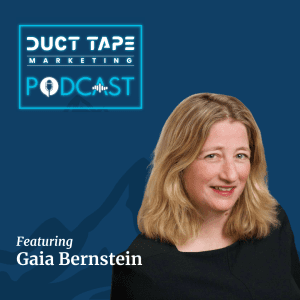 In this episode of the
In this episode of the  In this episode of the
In this episode of the 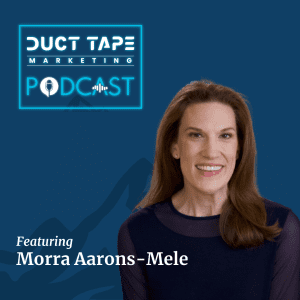 In this episode of the
In this episode of the  In this episode of the
In this episode of the 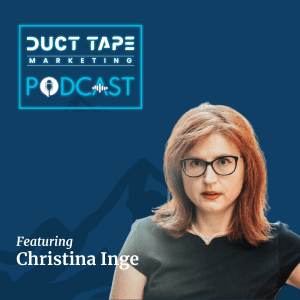 In this episode of the
In this episode of the 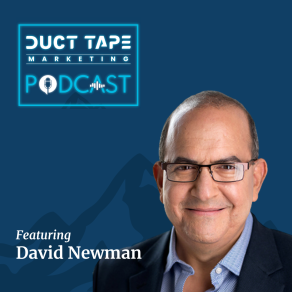 In this episode of the
In this episode of the